Features of refractory concrete
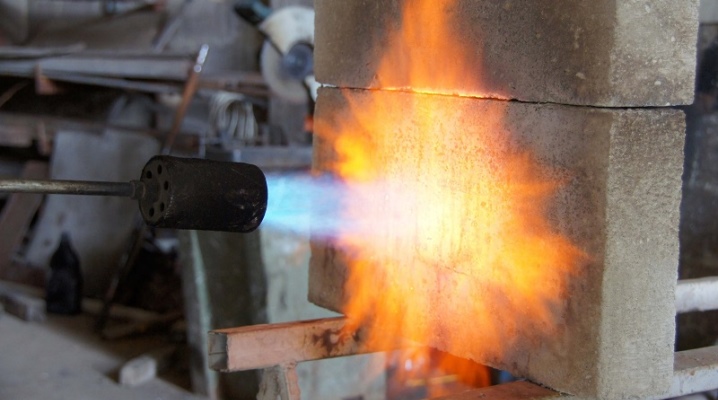
Refractory concrete is a special type of building material with improved characteristics. Due to its unique properties, it is in demand in many areas. It is worth considering in more detail what the material is, and whether it is possible to prepare refractory concrete on your own.
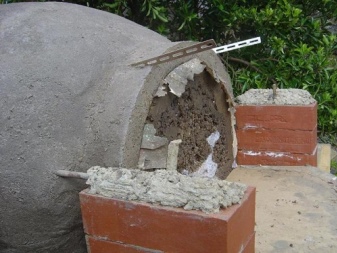
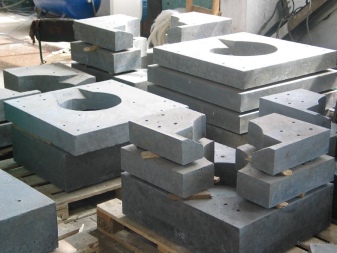
What it is?
Refractory concrete is different from standard concrete. The key difference is that the material copes well with the high temperatures that affect it. At the same time, the concrete does not collapse, does not lose its original properties. Depending on the composition and structure of heat-resistant concrete, it can withstand heating from 750 to 1800 degrees Celsius, as well as withstand an open flame.
Another difference between refractory concrete is the increased content of special components in the mixture, which increase its characteristics. Some materials of this group include various rocks with a small amount of quartz. The presence of alumina components in the concrete mix prevents the concrete from losing strength and drying out during the action of fire on the structure. These features make refractory concrete in demand in many areas.
Such mixtures are especially appreciated in the construction of industrial facilities or individual structures, the operation of which takes place at significant temperatures.
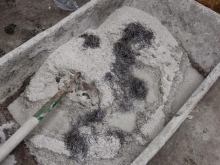
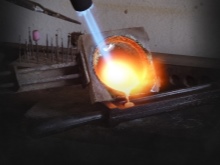
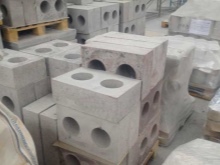
Characteristics and properties
The composition of heat-resistant concrete contains special ingredients that increase the resistance of the material to fire or high temperatures. Concrete manufacturers take as a basis a mixture of cements with the following markings:
- ABS;
- SSBA;
- SBK;
- SABT.
And also mixtures of ShB-B, TIB and VGBS are popular. In addition, in the process of creating concrete, components are used that increase its operational properties. In this case, the fillers that are added to the composition are pre-crushed to the consistency of powder or granules of certain sizes. Let's list the most common supplements.
- Plasticizers. These include expanded clay, ferrochrome slag, perlite and vermiculite.
- Binders. Basically, liquid glass acts as such an additive, less often alumina substances. And they can also add Portland cement. This makes thermoconcrete more durable.
- Placeholders. They are considered to be in demand supplements. This group includes blast-furnace slags, fireclay sand, crushed stone and pumice.
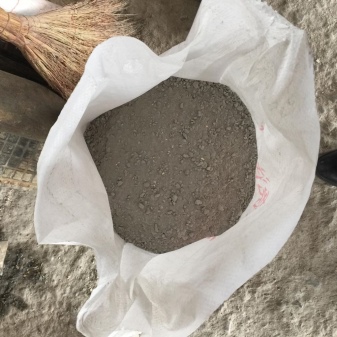
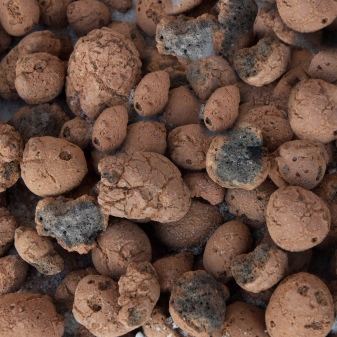
If you are trying to prepare refractory concrete yourself, you should carefully look for suitable recipes. It is also recommended to determine what technological and operational parameters you want to achieve from the material.
Key properties of refractory concrete:
- resistance to high temperatures and open fire;
- increased strength;
- improved performance;
- simplicity and availability of the manufacturing procedure.
The last point is explained by the absence of a high-temperature firing stage, which is required in the process of creating standard concrete.

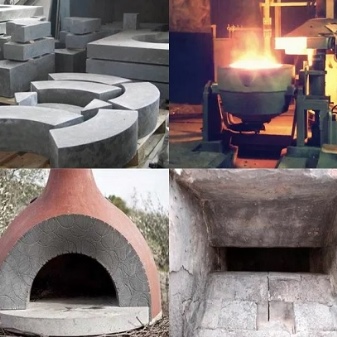
Species overview
Fire-resistant concrete is a special material that is not afraid of the negative effects of high temperatures. In turn, such concrete is divided into groups, determined by creating certain classifications.
By weight and structure
If we consider the division of fire-resistant concrete by weight and structure, then several types of materials can be distinguished in this category.
- Heavy concrete. It is used for the construction of foundation structures.
- Light. It is often used for the formation of ceilings, pipe laying and the construction of other objects with weight restrictions for operation.
- Porous. The material is also called cellular. Acts as a heat insulator.
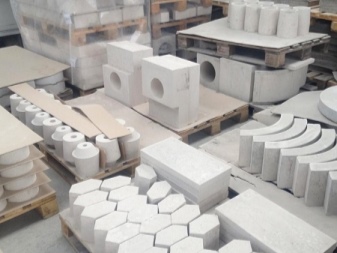
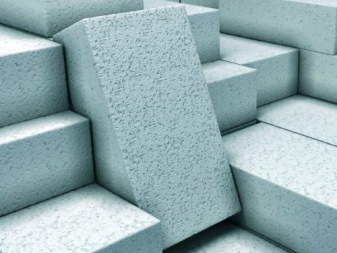
By type of binder
Regardless of the category, the composition of any concrete mixture contains an astringent component, which is responsible for the integrity of the hardening consistency. Various substances and materials can act as a binder.
- Base using high grade Portland cement. The use of such raw materials also makes it possible to achieve high strength of the mixture. Portland slag cement increases the viscosity of the mixture.
- Alumina cement or water glass. Suitable if there is a need to improve the refractory properties of concrete.
- Aluminophosphates. Concrete can also be phosphate bonded, which improves its binding properties.

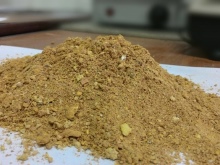
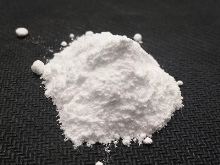
There is another classification of concrete by technical parameters. In this case, it is customary to subdivide the material into several types.
- Heat-resistant. The mixtures can withstand heating up to 700 degrees Celsius without loss. To create concrete, Portland cements and slag Portland cements are used.
- Refractory. Materials of this type are used for the construction of construction or industrial facilities that are exposed to temperatures of 1000 degrees. Liquid glass is often incorporated into the mixture to achieve the required characteristics.
- Highly refractory. They are used for facilities operating in the hottest conditions possible. To improve the strength characteristics of concrete, high-grade Portland cements or fireclay bricks are added to the mixture. And they can also use other components that improve the properties of the material. Concrete of this type is often used in the construction of heat-resistant structures: fireplaces, stoves, large-sized boilers.
Among other things, concrete is in demand in the construction of industrial buildings.
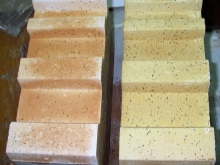
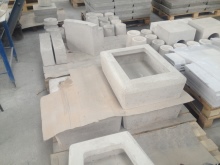

Scope of application
Refractory concrete is popular not only in the construction industry, but also in special fields. Depending on the type of material produced by the manufacturer, the direction of application of the product is determined.
- Dry mix ABS. It is in demand in the thermal power industry and for the assembly of Pompeian furnaces in metallurgy.
- Concrete mix containing a large amount of VGBS alumina. Designed to cover the interior surfaces of buckets that are used to pour flammable materials. And also acts as a lining for the hearth of the furnaces. The peculiarity lies in the fact that the material is able to survive the effects of temperatures of 1800 degrees Celsius.
- A mixture with a large amount of corundum filler SBK. The application is the same as for the second option.
- Concrete containing heat-insulating additives. It is in demand for the lining of thermal installations in the industrial sector.
- SBS mixture, which features self-spreading. They are used in the construction of structures exposed to temperatures up to 1500 degrees Celsius. These are mainly furnaces and heating installations.
- A mixture of ShB-B, which contains a fireclay filler. Designed to cover parts of burners operating at high temperatures. The temperature reaches 1300 degrees Celsius.
- Dry mix SSBA for plate reinforcement. The application is the same as in the second option.
The use of heat-resistant concrete with different properties makes the operation of buildings, structures and all kinds of equipment safer.
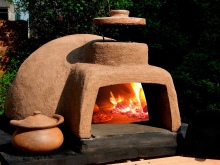
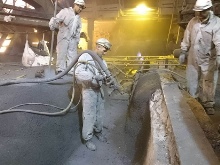

How to do it yourself?
Today, many manufacturers are engaged in the production of refractory concrete.However, if you wish, you can prepare a concrete mixture of high resistance to fire yourself, if you choose the right ingredients and fillers. It is noteworthy that many packages of products of some manufacturers have instructions for preparing heat-resistant concrete, which should be followed when organizing an independent process.
If the components are purchased in more than one set, then the preparation of the final concrete mixture is carried out in two stages.
- First, the cement base is kneaded. Cooking takes place in a tray or concrete mixer. To create a mixture, you will need to prepare water, sand or gravel. Also, a trowel and refractory mixture may be required to give the necessary characteristics to the base. The classic ratio of proportions for the future base is considered to be 3 parts of gravel to 2 parts of sand and 2 parts of refractory. If desired, the properties of the base can be fixed by adding 0.5 part of lime, previously slaked.
- Then add fillers to it in order to knead the refractory. You can check the readiness by taking a lump from the mixture. If in the hand it does not crumble and does not spread, then the mixture is considered ready, and it can be used to erect a construction object.
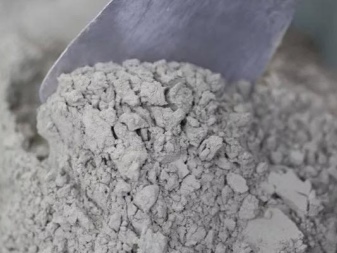
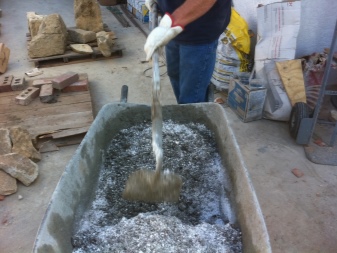
It is necessary to pay attention to the fact that in the process of mixing the base, it is important to achieve a homogeneous solution. Otherwise, it will not be possible to obtain the required concrete properties. As practice shows, it is better to knead in a building tray using a classic shovel. As for the drying of the material, during this process it is necessary to monitor how the moisture generated in the structure is distributed. To ensure uniform drying of the concrete, it will be necessary to organize high-quality ventilation. At the same time, it is recommended to close the structure during drying in order to make the process of moisture release from the material more uniform and not so fast. This is necessary to obtain a solid structure.
There are many ways and recipes for making refractory concrete with your own hands. The main thing that needs to be considered when carrying out independent work is compliance with the requirements of GOSTs and other regulatory documents. If you approach the process irresponsibly, there will be no guarantees that you will be able to get the desired material parameters. If you are not sure that you will be able to prepare the concrete mixture yourself, it is better to give preference to certified solutions from reliable manufacturers. The material created at the plant is not cheap, but at the same time it takes into account the requirements of building codes. Concrete structures made at the factory will definitely last a long time. The use of concrete mixes of this type is possible in the construction of industrial facilities, buildings and structures.

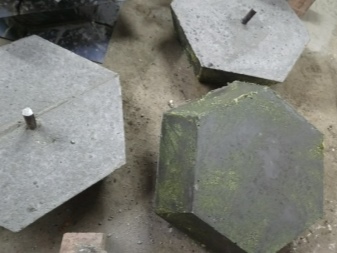
For information on how to make a refractory mortar and plaster a wood-burning stove, see the next video.













The comment was sent successfully.